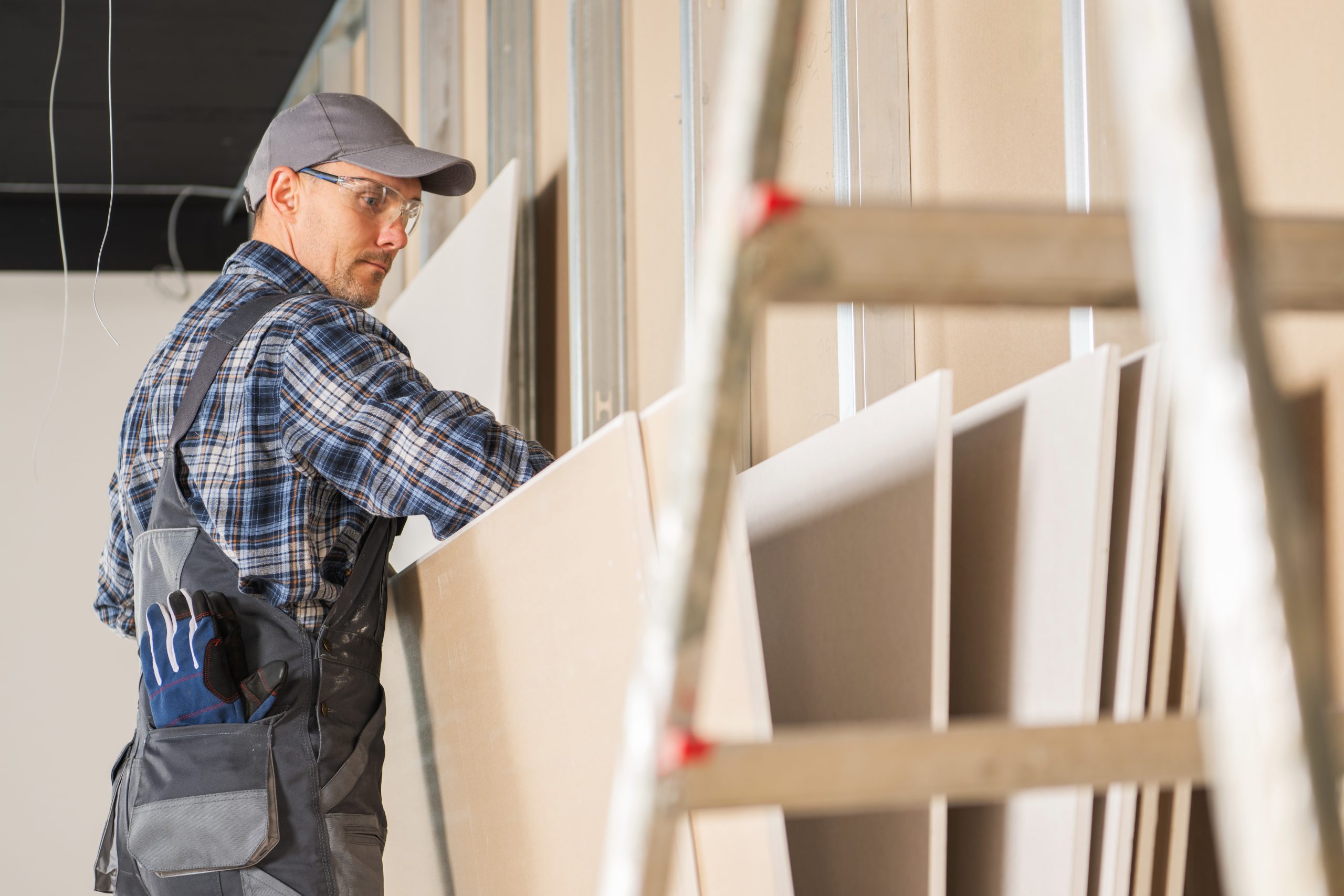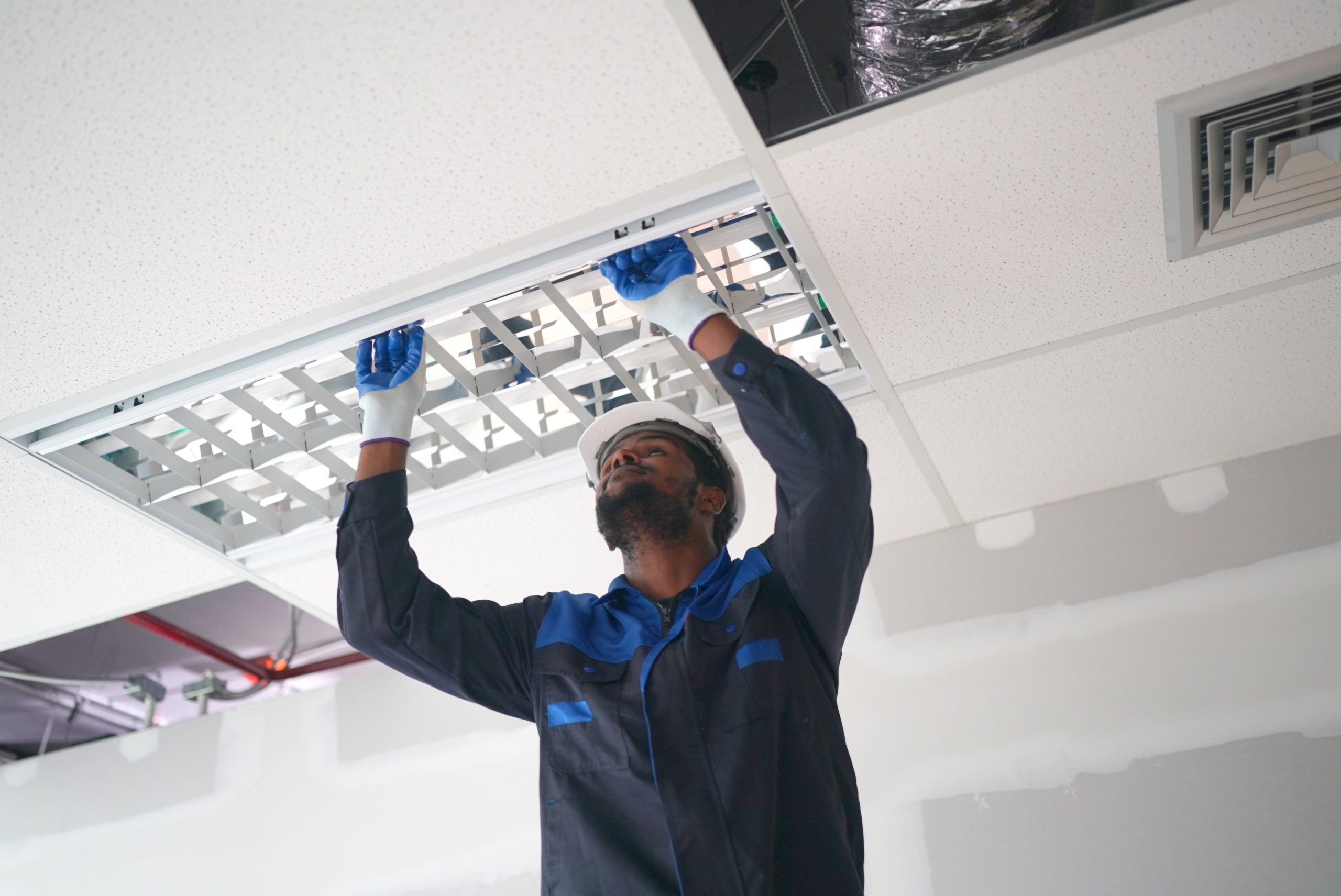suspended ceilings
Different types of suspended ceilings each have unique characteristics based on factors like materials, flexibility, ease of installation, acoustic properties, fire resistance, and cost. Panels come in various materials, surface finishes, suspension systems, styles, shapes, and sizes.
Some suspended systems are fixed, while others are demountable or modular. Demountable systems offer design flexibility and provide easier access to the space above the ceiling.
The most common suspended ceiling systems include:
Why is dry lining used?
Put simply, dry lining is much quicker than traditional plastering and achieves a similar result: a wall or surface that is ready to paint or cover. The plasterboard used in dry lining can hide pipes and wires, create insulation space, and even provide soundboarding.
Dry lining is also suitable for a wide range of applications as it can be added to surfaces that include brickwork or uneven surfaces. It can create curved walls too, which allows for creativity or to help manage smaller or uniquely shaped spaces.
Newer properties are often built with stud walls to create separate living spaces, and dry lining plasterboard can easily be added to these walls to make them smooth, sturdy, and safe.


